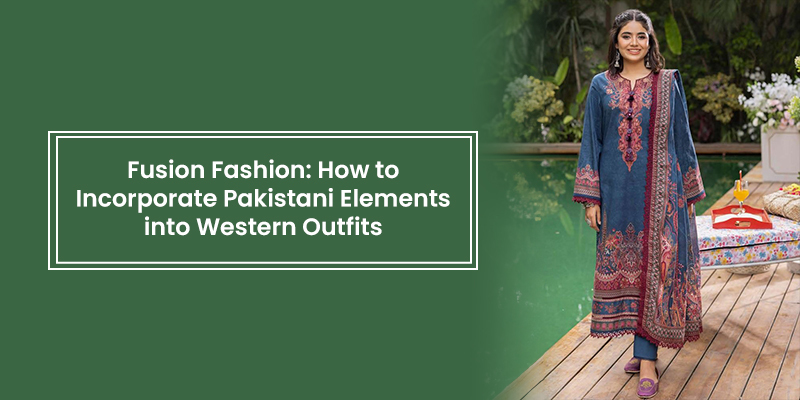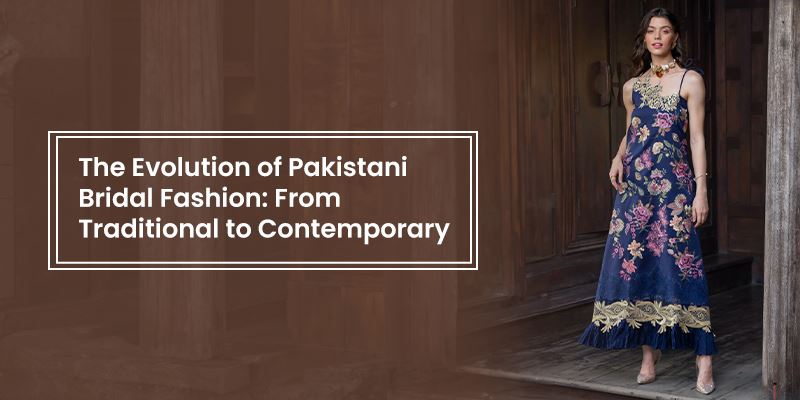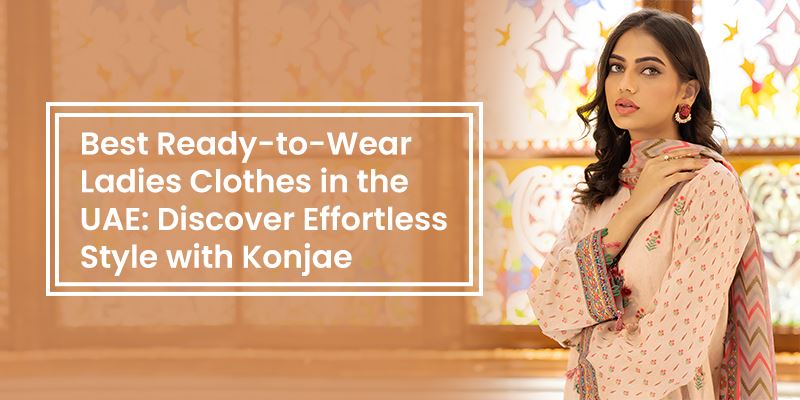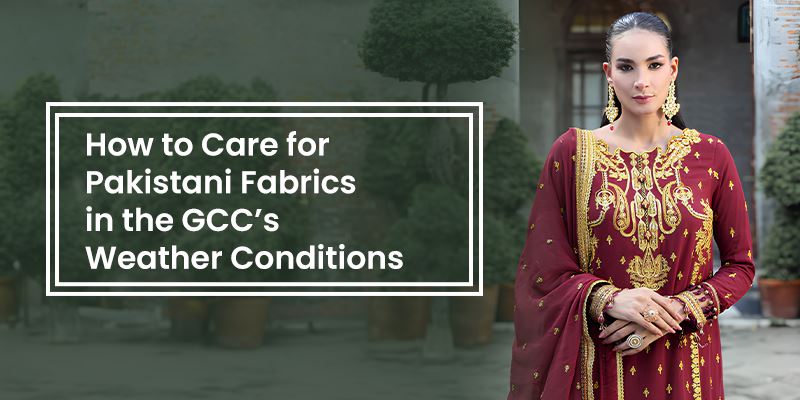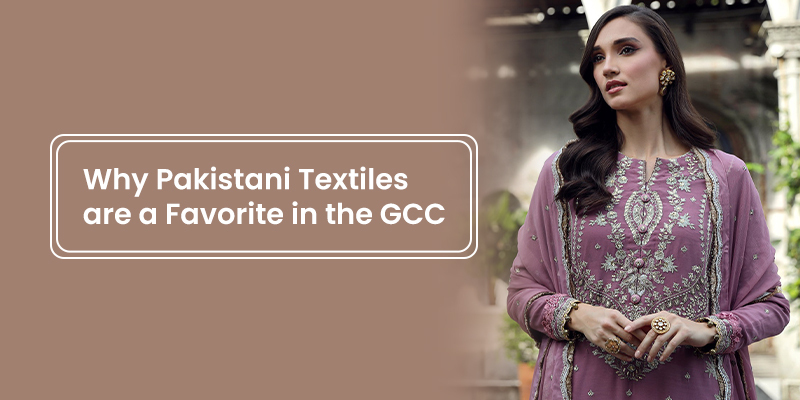The Art of Hand Embroidery in Pakistani Clothing: A Heritage Preserved
Hand embroidery in Pakistani clothing has a deeper meaning than just creating frills and folds; it is an art that has been inherited by locals. This extraordinary work depicts the diverse cultures, legacy, and art of different parts of Pakistan.
As time progresses with the changes of norms in the fashion world such art must be preserved as a form of face for the nation.
Historical Significance of Hand Embroidery in Pakistan
Hand embroidery has been a part of Pakistani culture for ages and every area possesses its style and way of embroidery. Traditionally, embroidered clothes were part of daily life and people put them on for going to church, weddings, and other critical occasions. These garments were not only indicators of status and wealth but also bearers of cultural heritage which were also handed from generation to generation.
Let it be Phulkari of Punjab, which was once used in weddings, or Balochi stitching that symbolizes tribal embroidery, every type is unique. These Pakistani clothing heritage hand embroidery practices have been passed down from generation to generation to the present age and are still greatly valued as part of the Pakistani heritage.
Popular Pakistani Hand Embroidery Techniques
Pakistan is home to a variety of traditional hand embroidery in Pakistan, each with its distinct style and regional influence:
- Phulkari: Phulkari comes from Punjab, and it has large floral designs made with fine silk threads in bright colors. It has been used in the designing of shawls and dupattas and has been regarded as an emblem of both wealth and happiness.
- Zardozi: It is a Mughal period embroidery technique that uses gold or silver metallic threads for intricate fashionable patterns. It is commonly used in bridal wear and formal occasions wear.
- Aari: With a hooked needle, Aari embroidery makes chain-stitch designs that can be floral or paisley in motif. It is better known and used frequently by the people in Pakistan in casual as well as formal dressing.
- Kashmiri: The most noteworthy characteristic of Kashmiri embroidery is the generally fine, floral, and paisley pattern, and the use of threads that are in soft, pastel shades. This style is common in the northern parts of the country.
- Sindhi and Balochi Embroidery: These styles are best characterized by using geometric shapes and distinguishing features, as well as the use of bright colors. They symbolize the cultural significance of embroidery in Pakistan especially in Sindh and Balochistan areas.
The Role of Embroidery Artisans in Pakistan
Hand embroidery artisans are the lifeline of Pakistan especially when it comes to this vintage art form. The skilled artisans and craftswomen spend time practicing their craft to achieve mastery of it from one generation to the other. However, despite occupying this critical position, artisans are exposed to various challenges such as low wages, lack of recognition, and the threat posed by mass-produced machine embroidery.
Initiatives meant to retain this art of embroidery in Pakistani fashion must therefore be directed towards ensuring that these artisans get paid adequately, are supplied with markets for their products, and are offered a chance to learn. Efforts by non-governmental organizations and fashion designers go a long way in preserving hand embroidery in Pakistaslni fashion especially when extending the needed support to artisans.
Hand Embroidery in Modern Pakistani Fashion
Hand embroidery occupies a special place in modern fashion as well. Traditional techniques have been used in modern designs and thus people wear fusion dresses categorized in modern wear due to the attraction of these styles. When placed on a simple kurta with embroidery on the neckline or a heavily embroidered bridal gown, the usage of such elements enriches the piece with cultural values.
Several designers such as Sana Safinaz, Rizwan Beyg, Maria B, and many more have been active in the use of Hand-stitched designs in Pakistani clothing and mixing it up with updated fashion to match the international markets. This fusion of old and new maintains the presence of hand embroidery in the fashion of Pakistan.
The Evolution of Hand Embroidery Over Time
Although hand embroidery is as old as the creation of mankind it has seen a transition even in the Pakistani context as the material, techniques customer demand, and taste changed. Nonetheless, people still regard this art, and aspects of the new fabric, thread, and designs have enabled the craft to evolve.
The expansion of the fashion industry has made Pakistani hand embroidery famous in the foreign world as they consider being unique and artistic. However, this exposure also has its shortcomings since a lot of machine-made imitations flood the market.
Conclusion
Pakistani clothing especially hand embroidery can be viewed as a living example of Pakistani culture. Thus, it is important to promote and maintain the heritage of hand-embroidered Pakistani dresses so that people can remember their origins.
By appreciating and investing in hand-embroidered clothing, we contribute to the survival and flourishing of this timeless craft for future generations.
Explore the exquisite world of hand-embroidered Pakistani clothing at KONJAE. We introduce you to the best handpicked craftsmen and brands for you to choose from an exquisite collection of elegant apparels that portray the inspired culture of Pakistan. Contact us now!
FAQs
What is the significance of hand embroidery in Pakistani clothing?
Hand embroidery is the most significant part of Pakistani clothing that reflects the cultural essence of the country. It makes the garments special, distinctive, and lovable to the people wearing them.
How is traditional hand embroidery preserved in Pakistani fashion?
Embroidery is sustained by the artisan, ethnological fairs, and modern designers combining traditional techniques with postmodernist trends, and practices.
What are the most popular hand embroidery techniques used in Pakistani clothing?
Some of them are Phulkari which has floral designs, Zardozi which has metallic embroidery, Aari which is chain embroidery, and Kashmiri which has floral and paisley designs. All the techniques are unique to a particular region.
How does hand embroidery enhance the beauty of Pakistani dresses?
Pakistani dress fuses different art forms, and hand embroidery plays a significant role in making the dresses more appealing and attractive to enhance their cultural perspectives and beauty.
What role do artisans play in preserving the art of hand embroidery in Pakistan?
Artisans are the ones who practice and have inherited this age-old craft. They transmit their techniques to the next generations, maintaining the essence of regional patterns and designs in Pakistani fashion.
How has the art of hand embroidery in Pakistani clothing evolved over time?
Modern hand embroidery has been developed by incorporating new designs and motifs but the basic techniques are still preserved. This evolution makes the transition between the old and new, which beautifully aligns with modern palates.
What are the cultural meanings behind different embroidery patterns in Pakistan?
There are distinct traditions associated with various patterns like Phulkari is associated with prosperity and Balochi embroidery is associated with tribal feeling. These patterns tend to depict the regional history and social class.
How do modern Pakistani designers incorporate traditional hand embroidery in their collections?
Modern designers incorporate hand embroidery with modern stylish cuts and materials to give a modern fusion in the dresses that capture the traditional and modern market while retaining the cultural heritage.
What makes hand-embroidered Pakistani clothing unique?
The difference is in the preciseness, traditions, and localized techniques that go into making each piece which are all pieces of art essentially with a history behind them.
How can one identify authentic hand embroidery in Pakistani fashion?
Hand embroidery is distinct because it has natural imperfections such as uneven stitches, coarse and different sections on the threads and material, and it is very time-consuming. While it may at times be similar to machine embroidery, it usually has a more three-dimensional look and intricacy.
Recent Posts
